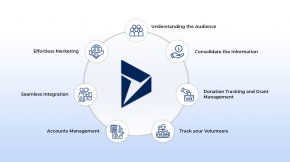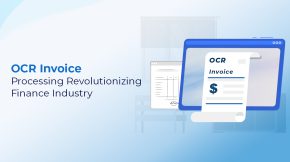How is Snowflake For Insurance Critical in 2026
Insurance is growing fast. But this growth creates huge problems that need solving now. Insurers handle mountains of data. Rules keep changing. Customers expect more every single day.
The answer sits right in front of them. It’s data. More than that, it’s about how well companies can actually use that data.
Why are Traditional Data Systems Holding the Insurance Industry Back?
Insurance companies built their work on systems that now drag them down. These old setups can’t keep pace with what people need today. The result? Big problems that hurt the whole business.
- Data Silos Slow Down Collaboration: Most insurance companies lock their important data in separate systems. Policy details live in one place. Claims data sits somewhere else. Customer conversations hide in another spot entirely. This split stops anyone from seeing the full picture of a customer. It makes teamwork harder. Companies miss chances they should have caught.
- Outdated and Rigid Infrastructure: Many insurers still run on stiff, old systems built inside their own buildings. These systems cost a fortune to maintain. They won’t bend when business needs shift. Making them bigger takes huge amounts of money. They simply can’t handle the flood of unstructured data pouring in from outside sources.
- Escalating Cybersecurity Threats: As technology improves, criminals get smarter too. Old systems often lack the strong, layered security needed to protect customer data. When breaches happen, companies lose money. They lose trust. The damage runs deep and spreads wide.
- A Constantly Changing Regulatory Environment: Rules keep shifting under everyone’s feet. Insurers must follow industry regulations, privacy laws, and consumer protection rules at state and national levels. Doing this with inflexible data systems eats up time, money, and people. It’s like running uphill with weights on.
What is Driving the Demand for Data-Led Transformation in Insurance?
The push to modernize doesn’t just come from inside insurance companies. The market itself forces the change. Customer expectations drive it forward too.
- The Rise of Hyper-Personalization: People today expect services built exactly for them. They want companies to understand their needs, their behavior, what’s happening in their lives right now. To give them this, insurers need to pull together data from every place customers interact with them. One fast-growing insurance firm moved from BigQuery to a multi-layered Snowflake for Insurance data model. That move unlocked capabilities that changed everything for them.
- The Pursuit of Sustainable Profitability: Financial leaders worldwide are pushing insurers to create packages and investment plans that can handle economic ups and downs. Plans that can weather natural disasters. This takes deep analysis, the kind you can’t fake. Companies need to model risk the right way. They need to stop big losses before they happen. They need to make sure they’ll stay profitable for years, not just quarters.
- The Demand for Greater Transparency: Consumers know more than ever before. They want clear answers to their questions. Before they buy anything, they want to understand policy terms. They want to know what risks they’re actually taking on. They want to grasp what coverage really means in plain words. Insurers who can show them insights backed by real data, in ways that make sense, build trust. That trust helps customers make choices based on facts instead of fear.
How Does Snowflake Provide a Modern Foundation for Insurance?
Snowflake’s AI Data Cloud gives insurers one platform that tackles these core problems head-on. It provides the foundation needed for real digital change. Not the kind you talk about in meetings. The kind that actually happens.
- A True Single Data Platform: Snowflake for Insurance lets insurers handle all their data work in one single place. Data engineering sits there. Analytics runs there. AI and machine learning happen right there too. Everything works on the same, consistent copy of data. This tears down those walls between systems. It creates one source of truth everyone can trust. It helps people across the company work together better, faster, smarter. Moving to this kind of setup often goes smoother with specialized Snowflake consulting services guiding the way. These experts make sure everything works right from day one.
- Seamless Data Access and Collaboration: The platform gives you live access to over 1,800 datasets on the Snowflake Marketplace. You can share data securely with partners while keeping full control over who sees what. This adds richness to your internal data. It powers smarter analytics for marketing campaigns, customer 360 initiatives, and risk modeling that actually reflects reality.
- Robust Security and Governance: Snowflake for Insurance protects data from end to end. Encryption locks everything down. Multi-factor authentication keeps the wrong people out. Controls let you decide exactly who sees what, when, and why. This keeps customer data safe around the clock. It helps build trust with consumers, the kind of trust that turns into loyalty. It makes following complex rules much easier too. Strong security sits at the heart of any modern Snowflake for Insurance platform worth its salt.
What are the Key Insurance Functions Reimagined by Snowflake?
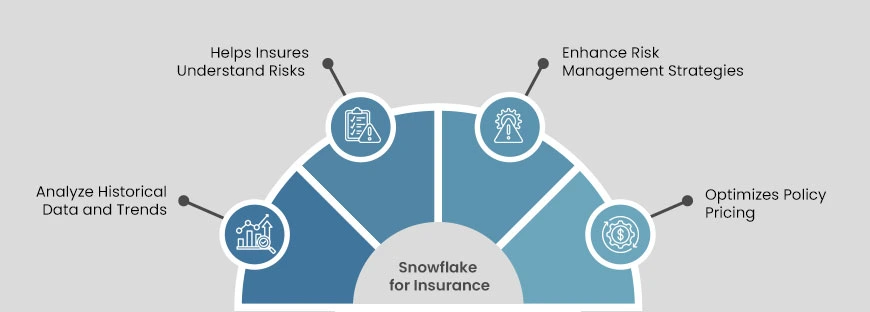 The real power of Snowflake for Insurance shows up in how it changes core processes. Things that used to drain money become ways to get ahead of competitors. Functions that held companies back now push them forward.
The real power of Snowflake for Insurance shows up in how it changes core processes. Things that used to drain money become ways to get ahead of competitors. Functions that held companies back now push them forward.
How Can Snowflake Revolutionize Insurance Underwriting?
Underwriting used to look backward. Companies based decisions on what happened before, like driving with eyes glued to the rearview mirror. Now it’s becoming forward-looking science driven by data. Snowflake for Insurance makes this shift possible. It lets underwriters do several important things they couldn’t do before.
- Leverage Diverse Data Sources: You can bring together data from your policyholders with information from outside sources. Think about geospatial data for checking property risks. Consider telematics data for auto insurance decisions. This helps you build pricing and risk selection models that actually work in the real world, not just in spreadsheets.
- Apply Machine Learning at Scale: Build machine learning models and put them to work analyzing complex risks with real accuracy. This creates underwriting techniques based on data, not gut feelings or outdated assumptions. Underwriters, risk managers, and actuaries can work together as a team. They can figure out exactly how much risk to take on and when to walk away. The ability to turn huge datasets into actions you can take changes the entire game. One insurance company proved this by putting a novel multi-layered data model in Snowflake for Insurance that fueled explosive growth.
- Optimize Pricing in Real-Time: Use data as it streams in to quote prices that are accurate, competitive, and responsive to what’s happening right this second. This helps you win customers in tight markets while making more money at the same time. It’s not magic. It’s just better information used faster.
Elevate your underwriting with AI-powered risk scoring and optimized pricing models.
Explore Our ApproachHow Does Snowflake Modernize Claims Management?
The claims process matters deeply to customers. It’s often the moment they judge whether choosing you was the right call. When you apply machine learning models at the First Notice of Loss (FNOL) and all through the claims lifecycle, you can handle routine work automatically. You catch fraud better. You make things easier for customers during what’s already a hard time for them.
Moving these critical workloads to the cloud needs a smart data migration strategy. You can’t just flip a switch and hope for the best. Expert Snowflake consulting services can remove risks from the whole process, from the first assessment to the final check that everything works.
How Can You Achieve a True Customer 360 View with Snowflake?
Understanding the whole customer is what every insurer wants. It’s also what most struggle to actually do. The platform lets you build complete profiles of people and businesses by bringing all data together in one place. It tracks every interaction across all channels, online and off.
This complete view powers everything that matters. Advanced customer journey analytics flow from it. Better contact centers become possible. Sales gets smarter. Distribution strategies get stronger. The right Snowflake for Insurance solution makes this complete view real, not just something you talk about in strategy meetings and never quite achieve.
What Are the Tangible Business Outcomes of Using Snowflake for Insurance?
 Moving to a modern data platform like Snowflake for Insurance brings results you can actually measure. Results that show up on the bottom line in ways executives care about. The digital change that Snowflake for Insurance enables leads to advantages over competitors that last beyond one quarter or one year.
Moving to a modern data platform like Snowflake for Insurance brings results you can actually measure. Results that show up on the bottom line in ways executives care about. The digital change that Snowflake for Insurance enables leads to advantages over competitors that last beyond one quarter or one year.
- Enhanced Operational Efficiency: Moving to the cloud and breaking down walls between data naturally makes work flow better. The friction disappears. Bringing different data sources together smoothly matters deeply for giving people the personal services that keep them loyal. It cuts down on manual work that wastes time and creates errors. This sits at the core of what using Snowflake for Insurance actually delivers.
- Optimized Pricing and Profitability: When you understand risk more deeply by using real-time and historical data together, you can price policies more accurately. This isn’t guesswork anymore. This directly improves loss ratios in ways that add up fast. It makes underwriting more profitable quarter after quarter. It keeps you financially stable for the long run, through market changes and unexpected events.
- Improved Security and Compliance: Snowflake’s strong, built-in security features protect data from end to end. They support major compliance certifications that regulators actually care about. This keeps customer data protected around the clock. It makes meeting regulatory reporting requirements easier and more accurate too. This foundation matters deeply for any Snowflake for Insurance implementation that’s going to last. The journey toward insights you can act on became real for a fast-growing insurance company that used tailored data integration to fuel expansion that surprised even them.
Why Partnering with the Right Expertise Matters
Putting a powerful platform like Snowflake to work takes more than just technology sitting on a server somewhere. It needs deep knowledge. It needs experience with what actually works and what sounds good but fails in practice.
As a Snowflake Solutions Partner, Beyond Key provides certified professionals who understand Snowflake’s architecture inside and out. We deliver complete, end-to-end Snowflake consulting services, from first strategy sessions to migration and ongoing support that doesn’t disappear after launch. Our approach means designing architectures built for your specific business goals, not cookie-cutter solutions copied from somewhere else. This makes sure your investment in Snowflake for Insurance delivers results that change things and stand the test of time, market shifts, and everything else the future throws at you.
Conclusion: Securing the Future of Insurance
The insurance industry is clearly moving toward a future built on data. There’s no going back now. The problems of data stuck in silos, old systems limping along, and customers who expect more can’t be pushed aside anymore. They won’t wait.
Snowflake provides a complete, secure, and scalable platform that helps insurers not just solve these problems but innovate in ways competitors can’t match and grow beyond what seemed possible. By using Snowflake for Insurance, companies can find deeper insights hiding in their data. They can create experiences that feel personal to each customer. They can build a business model that’s more efficient and more profitable for 2026 and the years beyond it. A strong strategy for Snowflake for Insurance is what keeps you competitive when everyone else is scrambling to catch up.
Frequently Asked Questions (FAQs)
1. How does Snowflake handle real-time data processing for insurance?
Snowflake is built to support real-time data ingestion and processing right out of the box. Through its architecture and smooth connections with streaming platforms like Kafka, insurers can load and analyze data as it arrives, second by second. This lets you see things immediately in areas like fraud detection at the exact point of transaction. You can check risk dynamically based on live event data flowing in right now. It brings together real-time and historical information for analytics that give you the complete picture, not just a snapshot from yesterday.
2. What kind of support is available when migrating to Snowflake?
Moving to Snowflake follows a clear process with full support along the entire way. You get technical help and detailed documentation from Snowflake itself. Partners often provide 24/7 managed services to handle any issues during the move and after you’re up and running. This support covers everything important.
It starts with checking your infrastructure and planning strategy that makes sense for your situation. It continues through moving data without losing anything, making queries work better and faster, and making sure the final deployment goes smoothly. Nobody leaves you hanging halfway through.
3. Is Snowflake suitable for smaller insurance companies or just large enterprises?
Snowflake works for businesses of all sizes, from small regional insurers to global giants. Its unique design separates storage from compute, which makes it highly scalable and cost-effective in ways old systems never could be.
Smaller insurance companies can start with just what they need right now. They pay only for what they actually use. As their data needs grow over time, they can scale up smoothly without ripping everything out and starting over. This removes the need for huge upfront spending on infrastructure that might sit half-empty. It makes Snowflake for Insurance a solution any insurer can access and benefit from, regardless of size.
4. How does Snowflake’s pricing model work for an insurance company?
Snowflake uses a flexible, consumption-based pricing model that matches how you actually use it. Costs break down into two main parts that are easy to understand. First is storage. Second is compute.
You pay for the amount of data stored each month. You also pay for the computational resources (virtual warehouses) used to run queries and do data processing tasks. This pay-as-you-go approach lets insurance companies match costs directly with what they use each month. You avoid paying for resources sitting idle overnight or on weekends when nobody’s working.
5. Can Snowflake integrate with existing Business Intelligence (BI) tools?
Yes, Snowflake connects smoothly with many popular BI and data visualization tools your team probably already uses. This includes Tableau, Power BI, and Looker, among others. It offers certified connectors and drivers that make it simple to link your existing analytics setup to the Snowflake Data Cloud.
This lets your teams keep using the tools they already know and trust. They don’t have to learn everything from scratch. Meanwhile, they get all the benefits of Snowflake’s performance, concurrency, and scalability running behind the scenes, making everything faster and more reliable.


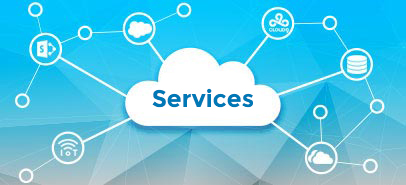
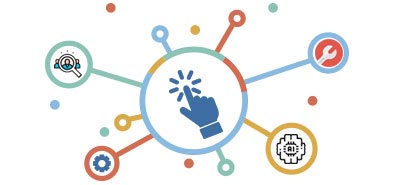




 The real power of
The real power of  Moving to a modern data platform like
Moving to a modern data platform like 
